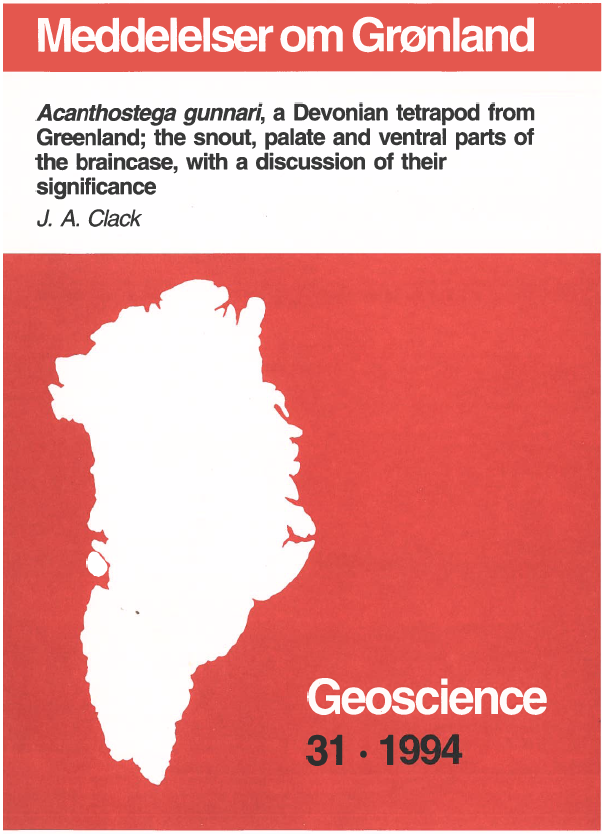Acanthostega gunnari, a Devonian tetrapod from Greenland; the snout, palate and ventral parts of the braincase, with a discussion of their significance
DOI:
https://doi.org/10.7146/moggeosci.v31i.140691Abstract
The snout, including the naris and choana, and the palate, ventral parts of the brain case and suspensorium of Acanthostega gunnari are described from three-dimensional specimens and sections. The naris is low on the snout, and the choana and vomerine dentition resemble those of osteolepiform fishes. The braincase is ossified in two portions in ventral view, with the ventral cranial fissure still evident. Dorsally, however, the otic region and sphenethmoid are co-ossified, so there was no movement possible between them. The palate is "closed" as in osteolepi forms and primitive tetrapods, and the parasphenoid is grooved as in some osteolepiforms. It is argued that the low naris and divided braincase represent the primitive condition for tetrapods, and that the condition of the naris and choana most closely resemble those of panderichthyid fishes among sarcopterygians.

Downloads
Published
How to Cite
Issue
Section
License
Coypyright by the authors and the Commision for Scientific Research in Greenland / Danish Polar Center. No parts of the publications may be reproduced in any form without the written permission by the copyright owners.

